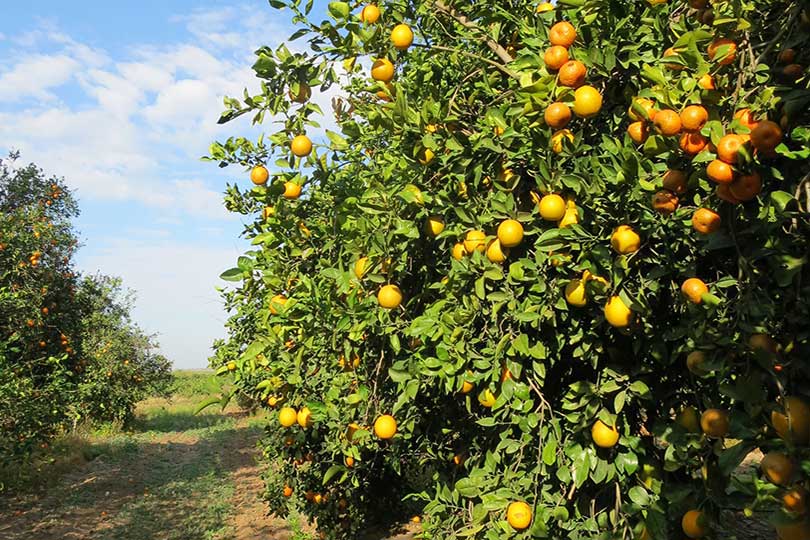By Jennifer Dorsett
Field Editor
A Texas A&M AgriLife Extension Service scientist has been awarded a $1.2 million grant by the U.S. Department of Agriculture (USDA) to research antimicrobials that could prevent citrus greening.
Dr. Kranthi Mandadi, assistant professor of plant pathology and microbiology at Texas A&M AgriLife Research and Extension Center at Weslaco, will lead a consortium of researchers from citrus-producing regions to conduct high-throughput screening, a method long-used in biomedical drug discovery.
“We’ve brought together teams of interdisciplinary faculty with expertise in engineering, computational biology, genomics, genetics, pathology and extension to identify small molecules and antimicrobials that block virulence proteins of the pathogen causing citrus greening,” Mandadi said.
The high-throughput screening process is much faster than traditional methods of screening used in plant disease research. The pathogens that cause citrus greening are not able to be cultured in the lab, Mandadi said, so new therapies can be hard to test.
Antibiotics, defense modulators and zinkicides are being researched for use against citrus greening but typically have been tested on mature trees by foliar or leaf sprays, injections and soil drenching or by culturing surrogate pathogens to screen against. These methods can be inconsistent and expensive, but using hairy roots to screen antimicrobials against pathogens can be conducted quicker, saving time and money.
“This collaborative research is addressing a major economic issue affecting citrus growers in Florida, Texas and California,” Dr. Bill McCutchen, executive associate director of Texas A&M AgriLife Research in College Station, said. “We are hopeful that the new high-throughput screening process will lead to multiple discoveries to mitigate the threat of citrus greening and other hard-to-detect pathogens and diseases while enhancing quality and yields.”
A key component of the research project is the ability to cultivate pathogens in “hairy roots,” a type of plant tissue culture. These roots allow researchers to conduct faster bioassays using the high-throughput process.
“The idea is to couple the hairy root screening platform with the latest genomic and computational modeling tools to discover antimicrobials directly blocking citrus greening pathogen proteins and deliver them in a much shorter time-frame,” McCutchen said. “Once shortlisted, potent antimicrobials will be considered for greenhouse and field tree evaluations.”
The consortium includes Texas A&M biological and agricultural engineering professor Dr. San Sandun Fernando; Texas A&M-Kingsville Citrus Center assistant professor Dr. Veronica Ancona; University of California professor Dr. Gitta Coaker; director of University of California Lindcove Research and Extension Center and research entomologist Dr. Elizabeth Grafton-Cardwell; University of Florida Citrus Center professor Dr. William Dawson; University of Florida Citrus Research and Education Center extension agent Dr. Stephen Futch; and Southern Gardens Citrus director of research and business development Mike Irey.
Citrus greening, also known as Huanglongbing disease, is a bacterial disease transmitted by the Asian citrus psyllid. It does not affect human health, but it does negatively impact production, quality and appearance of citrus trees, eventually causing tree death.
The disease has caused massive losses to the citrus industry in Florida and was confirmed to be present in Texas in 2012.

